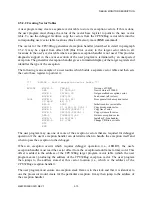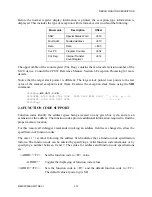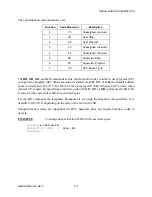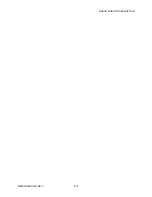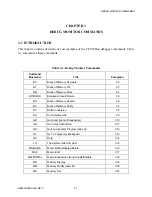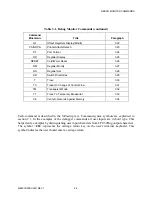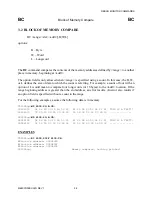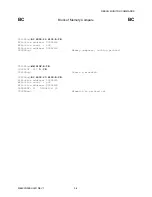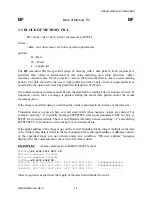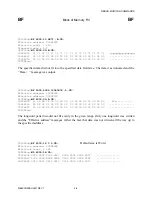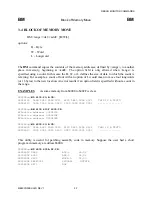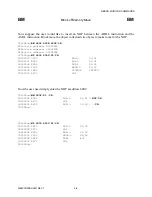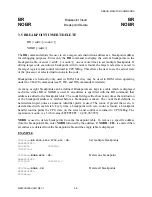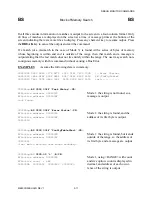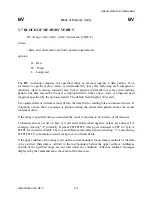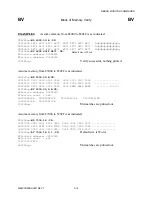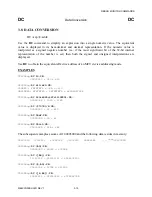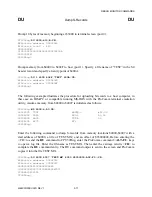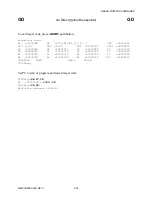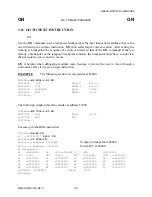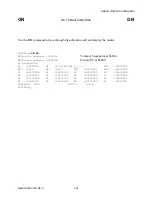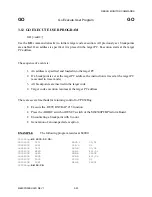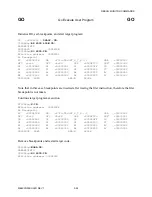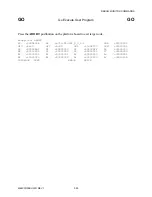
DEBUG MONITOR COMMANDS
M68CPU32BUG/D REV 1
3-10
BS
Block of Memory Search
BS
3.6 BLOCK OF MEMORY SEARCH
BS <range><del><text> [;B|W|L] or
BS <range><del><data>[<del><mask>] [;B|W|L|N|V]
The BS command searches the specified range of memory for a match with a user-entered data
pattern. This command has three modes:
Mode 1
LITERAL STRING SEARCH — executes a search for the ASCII equivalent of
the literal string entered by the user. Mode 1 is indicated if <RANGE> is followed
by a <text> field. The size as specified in the option field defines whether the
count field in <range> refers to bytes, words, or longwords. The option field is
available only if <range> is specified using a count. If a match is found then the
address of the first byte of the match is output.
Mode 2
DATA SEARCH — a data pattern is entered by the user as part of the command
line. The data field size is entered by the user in the option field; the default is
word (W). The size entered in the option field also dictates whether the count field
in <RANGE> refers to bytes, words, or longwords. The following occurs during a
data search:
1. The user-entered data pattern is right-justified. Leading bits are truncated
or leading zeros are added as necessary to make the data pattern the
specified size.
2. Successive bytes, words, or longwords, within the specified range, are
compared to the user-entered data. Comparison is made only on those bits
at bit positions corresponding to a 1 in the mask. If no mask is specified
then a default mask of all one's is used (all bits are compared). The size of
the mask is the same size as the data.
3. If the ''N'' (non-aligned) option has been selected then the data is searched
on a byte-by-byte basis, rather than by words or longwords regardless of
the size of <data>. This is useful if a word (or longword) pattern is being
sought, but is not expected to lie on a word (or longword) boundary.
4. If a match is found, the address of the first byte of the match is output
along with the memory contents. If a mask was in use, then the actual data
at the memory location is displayed, rather than the masked data.
Mode 3
DATA VERIFICATION — If the ''V'' (verify) option is selected and the memory
contents do not match the user-specified pattern, then addresses and data are
displayed. Otherwise this mode is identical to Mode 2.
Содержание M68CPU32BUG
Страница 16: ...GENERAL INFORMATION M68CPU32BUG D REV 1 1 8 ...
Страница 30: ...DEBUG MONITOR DESCRIPTION M68CPU32BUG D REV 1 2 14 ...
Страница 102: ...DEBUG MONITOR COMMANDS M68CPU32BUG D REV 1 3 72 ...
Страница 168: ...DIAGNOSTIC FIRMWARE GUIDE M68CPU32BUG D REV 1 6 24 ...

